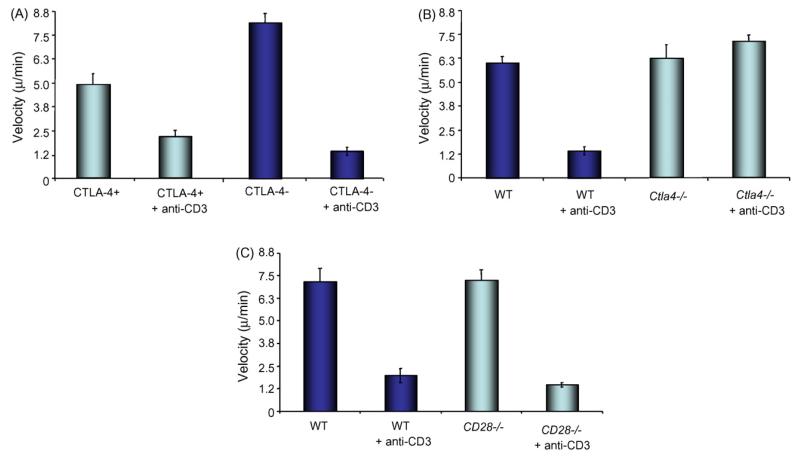Fig. 1.
Panel A: anti-CD3 induces a stop-signal in sorted CTLA-4− and + primary T-cells. T-cells from normal mice were separated by sorting with anti-CTLA-4 beads as described [15], expanded using anti-CD3/CD28 stimulation, rested and stimulated with anti-CD3 and assessed for motility on plates coated with ICAM-1. Histogram shows motility of cells (μm/min). Panel B: anti-CD3 fails to induce a stop-signal for motility in T-cells from Ctla-4−/− mice. T-cells from CTLA-4 deficient mice expanded and exposed to anti-CD3 as described above and assessed for motility on plates coated with ICAM-1. Histogram shows motility of cells (μm/min). Panel C: anti-CD3 induces a stop-signal in T-cells from CD28−/− mice. Pre-activated primary CD4+ T-cells from CD28−/− mice were assessed for motility as described above. Error bars represent standard deviations (S.D.). p values were <0.05 and considered significant.

